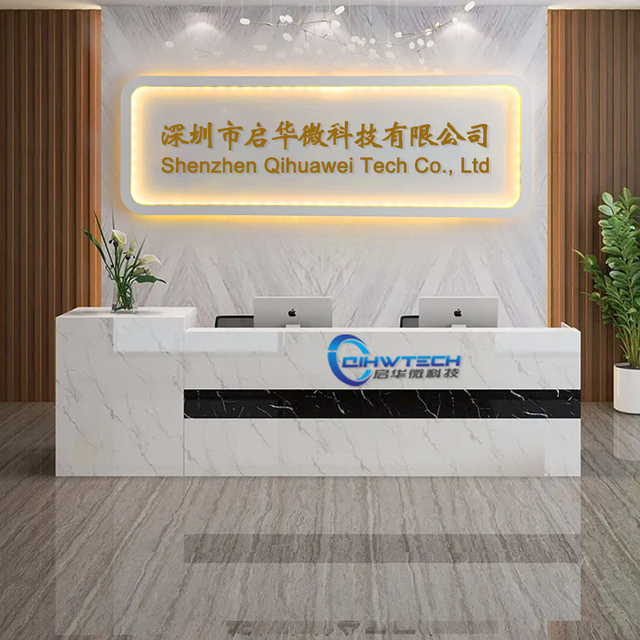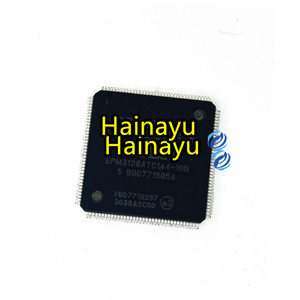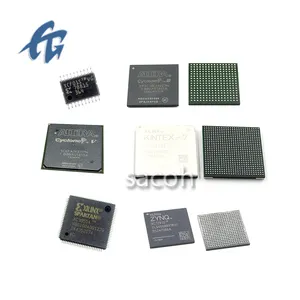Complex Programmable Logic Device



 1/1
1/1



 0
0



 0
0





 1/2
1/2








 1/2
1/2



 0
0






 1/6
1/6




 1/3
1/3










 1/1
1/1





 1/3
1/3




 1/3
1/3



 0
0




 1/3
1/3




 1/3
1/3






 1/3
1/3




 0
0




 1/2
1/2



 0
0
About complex programmable logic device
Where to Find Complex Programmable Logic Device Suppliers?
China serves as a central hub for semiconductor component manufacturing, with Shenzhen emerging as a dominant cluster for integrated circuits (ICs) and programmable logic devices. The city's ecosystem integrates design houses, wafer testing facilities, and distribution networks within close proximity, enabling rapid inventory turnover and responsive supply chains. Suppliers in this region specialize in both original and second-sourced complex programmable logic devices (CPLDs), supporting applications in industrial automation, telecommunications, and embedded systems.
This concentration facilitates vertical coordination across packaging, testing, and logistics providers—reducing lead times to 7–15 days for standard orders. Buyers benefit from localized technical expertise and flexible procurement models, including small-batch sampling and bulk fulfillment. Production scalability is enhanced by access to legacy and current-generation IC inventories, with many suppliers maintaining stock of discontinued or hard-to-find CPLD variants. Cost efficiency is further amplified by competitive pricing structures, where unit costs range from $0.55 to $70.83 depending on speed grade, package type, and volume commitments.
How to Choose Complex Programmable Logic Device Suppliers?
Selecting reliable partners requires systematic evaluation based on operational performance and technical accountability:
Quality Assurance Verification
Confirm adherence to international standards such as RoHS and ISO 9001. While not all suppliers publish formal certifications, consistent on-time delivery rates above 98% and low reorder rates suggest stable quality control processes. Prioritize vendors providing traceable batch information and device marking verification to mitigate risks associated with counterfeit components.
Operational Performance Metrics
Evaluate responsiveness and fulfillment reliability using quantifiable benchmarks:
- Target response times under 2 hours for initial inquiries
- On-time delivery performance exceeding 98%
- Reorder rates below 20% indicating customer retention challenges
Cross-reference these metrics with online transaction volume, which correlates with order-handling capacity and inventory depth.
Procurement Risk Mitigation
Implement transaction safeguards such as escrow-based payment terms, particularly for high-value or prototype-grade devices. Request sample testing prior to full-scale procurement, verifying electrical parameters against manufacturer datasheets. For long-term contracts, assess supplier diversification across product lines—those offering complementary ICs (e.g., FPGAs, microcontrollers, PMICs) are more likely to maintain stable sourcing channels.
What Are the Best Complex Programmable Logic Device Suppliers?
| Company Name | Main Products | Online Revenue | On-Time Delivery | Avg. Response | Reorder Rate | Min. Order Quantity | Price Range (USD) | Verified Status |
|---|---|---|---|---|---|---|---|---|
| Vicko Electronics Technology Co., Limited | Other ICs, Microcontrollers, FPGA, Power Management | US $80,000+ | 100% | ≤1h | <15% | 1–180 pieces | $0.55–70.83 | |
| Shenzhen Anshengchuang Technology Co., Ltd. | Other ICs, FPGA, Optoelectronics, Specialized ICs | US $3,000+ | 100% | ≤22h | <15% | 1 piece | $1.00 | |
| Shenzhen Huaxia Forest Technology Co., Ltd. | Camera Modules, Development Boards, Relays | US $20,000+ | 92% | ≤2h | <15% | 1–30 pieces | $0.55–18.58 | |
| Shenzhen Mingdewei Electronics Limited | Not specified | US $130,000+ | 99% | ≤2h | 19% | 100 pieces | $1.00–2.00 | Multispecialty Supplier |
| Shenzhen Wantengyu Technology Co., Ltd. | Not specified | US $50,000+ | 100% | ≤1h | 37% | 1 piece | $0.65–2.47 | Multispecialty Supplier |
Performance Analysis
Vicko Electronics and Shenzhen Wantengyu demonstrate strong operational discipline with 100% on-time delivery and sub-2-hour response times, making them suitable for time-sensitive procurement cycles. Vicko offers wide price variation due to mixed product offerings, including high-cost embedded CPLD modules. Shenzhen Mingdewei leads in revenue volume, suggesting extensive market reach, though its 100-piece MOQ may limit suitability for prototyping. Anshengchuang stands out for accessibility with a universal $1.00 pricing model and single-unit MOQs, ideal for engineering samples. Conversely, Wantengyu’s 37% reorder rate indicates potential post-sale service gaps despite strong delivery performance. Buyers should align supplier selection with use case: low-volume development favors Anshengchuang or Wantengyu, while high-volume production may benefit from Mingdewei’s scale.
FAQs
How to verify complex programmable logic device authenticity?
Request high-resolution images of physical components showing manufacturer markings, lot codes, and packaging labels. Cross-check part numbers against official datasheets from Altera, Xilinx, or Atmel. For critical applications, employ third-party testing services to perform decapsulation and die inspection.
What are typical minimum order quantities?
MOQs vary significantly: most suppliers support 1-piece orders for active components, while legacy or high-pin-count devices may require 30–180 units. Bulk pricing typically applies at 100+ units, especially for standardized packages like TQFP or BGA.
Are samples available for testing?
Yes, nearly all listed suppliers offer single-unit sales suitable for functional validation. Pricing for samples reflects commercial rates, generally between $0.55 and $2.50 per unit, with immediate shipment availability for in-stock items.
Do suppliers support global shipping?
All identified suppliers operate export-ready logistics frameworks with standard shipping via express carriers (DHL, FedEx) or air freight. Lead times average 5–10 business days internationally. Ensure compliance with destination regulations regarding electronic components, particularly for restricted-use frequencies or military-grade specs.
Can CPLDs be customized or programmed before delivery?
Pre-programming services are limited among these suppliers. Most provide unprogrammed devices; buyers must integrate configuration workflows into their own assembly or testing stages. For specialized requirements, engage suppliers with FPGA or development board offerings—they are more likely to have programming infrastructure in place.


























































































































